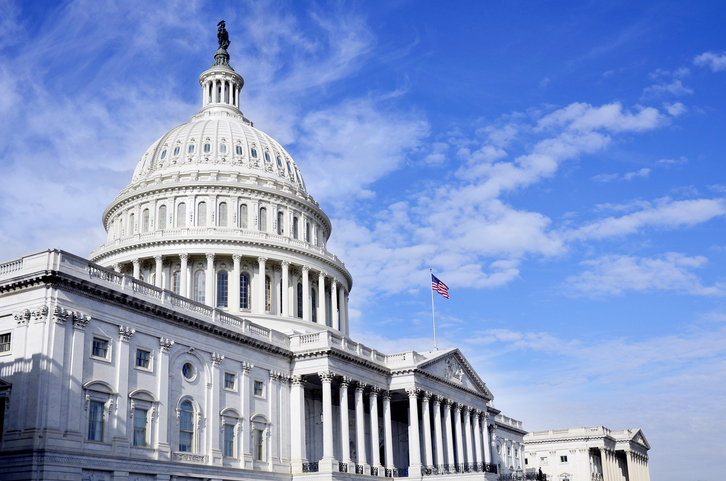
A new bipartisan bill in Congress could finally ban asbestos in all forms, closing the dangerous legal gaps left by prior regulations. Although asbestos is a known carcinogen, it remains legal in several forms within the United States. This renewed effort could change that once and for all.
At DuBose Law Firm, we support legislative action that prioritizes public health and holds accountable those responsible for exposing workers and families to asbestos. This proposed ban would be a major step forward for future generations.
What the Bill Would Do
In September 2025, lawmakers introduced a new bill designed to ban all forms of asbestos. The legislation targets not only chrysotile asbestos, which the EPA banned in 2024, but also the five other types still legally permitted in the United States.
If passed, this bill would:
- Prohibit the manufacture, import, processing, and distribution of all six asbestos fiber types
- Prevent future stockpiling or commercial use of asbestos-containing products
- Establish enforceable mechanisms for eliminating asbestos from the U.S. supply chain
The bill addresses longstanding gaps in national asbestos policy and would align the United States with dozens of countries that have already adopted comprehensive bans.
The Current Legal Loophole
Many people believe asbestos is already banned in the U.S., but this is only partially true. The EPA’s 2024 rule prohibited chrysotile asbestos, the last type still actively used in manufacturing. However, the other five forms of asbestos – amosite, crocidolite, tremolite, anthophyllite, and actinolite, are not covered by that rule.
These types are just as toxic and still present in older materials, industrial equipment, and even some imported goods. This legal gray area continues to expose workers, veterans, and families to significant health risks.
Why a Full Ban Is Urgently Needed
All forms of asbestos can cause serious illness. It is the only known cause of mesothelioma, a rare and fatal cancer affecting the lining of the lungs, abdomen, or heart. Asbestos is also linked to asbestosis, lung cancer, and other chronic respiratory conditions.
Once asbestos fibers are inhaled, they can remain in the body for decades, eventually leading to disease. Even brief or secondhand exposure can result in life-threatening illnesses.
Without a full ban:
- Construction workers, pipefitters, and electricians continue facing exposure risks
- U.S. Navy veterans remain vulnerable from decades-old ship materials
- Demolition and renovation crews may unknowingly disturb asbestos in older buildings
- Children and spouses may face secondhand exposure brought home on work clothes
To learn more about how people are exposed, visit our page on asbestos exposure and risk factors.
What Makes This Bill Different
This is not the first time Congress has considered banning asbestos. What sets this effort apart is a combination of bipartisan support, recent regulatory progress, and growing public awareness.
Senator Jeff Merkley (D-OR) and Senator Steve Daines (R-MT) are leading the charge. They are supported by a coalition of lawmakers who view this issue not as political, but as a public health necessity.
The bill follows the momentum of the EPA’s chrysotile ban, which was finalized in 2024. That historic decision showed that federal agencies recognize the risk. Now, lawmakers are stepping in to finish what the EPA started.
How the Ban Would Work
If passed, this legislation would:
- Make it illegal to produce, import, or use any form of asbestos
- Require identification and phasing out of existing stockpiles
- Support safer alternatives through federal procurement and industry transition
- Authorize regulatory agencies to monitor compliance and protect high-risk workers
This framework would not only close existing loopholes, it would help prevent future asbestos-related diseases from developing.
Why It Matters to Mesothelioma Victims
At DuBose Law Firm, we represent clients whose lives have been devastated by asbestos exposure. In nearly every case, the harm could have been prevented if better laws had been in place.
This bill matters because:
- It acknowledges decades of unnecessary suffering
- It protects future generations from exposure
- It eliminates the legal gray areas that companies exploit
- It removes a known carcinogen from American industries
If someone you know has been diagnosed with mesothelioma or another asbestos-related illness, we are here to help you understand your legal rights. Visit our page on the lawsuit process for mesothelioma victims to learn more.
Frequently Asked Questions About the Asbestos Ban
Is asbestos banned in the U.S.?
Only chrysotile asbestos is banned. Other forms remain legal unless new legislation is passed.
What types of asbestos are still legal?
Amosite, crocidolite, tremolite, anthophyllite, and actinolite. All are considered dangerous and cancer-causing.
Why wasn’t asbestos banned earlier?
Regulatory and industry resistance delayed meaningful action. OSHA regulations severely limited the use of asbestos in the workplace – making it not economically feasible for most manufacturers to continue production. However, that was not the same as an outright ban. The EPA attempted a ban several decades ago but the ban was reversed in court challenges brought by industery because the U.S. Toxic Substances Control Act lacked the authority to enforce a full ban until recently.
Who is most at risk of asbestos exposure?
Workers in construction, shipyards, the military, and manufacturing. Families may also be exposed through contaminated clothing and older buildings.
How would this new bill affect existing asbestos?
The bill would require phase-outs, inventory reporting, and restrictions on future use or storage.
What is the benefit of a full ban?
It saves lives by eliminating preventable exposure to a known carcinogen.
